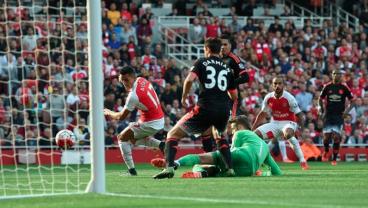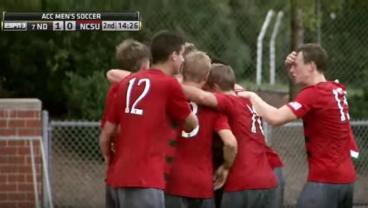Losing a World Cup final in extra time is brutal and tough to come back from. Losing a Copa America final on penalties the subsequent year is a kick to the teeth. Losing yet another Copa America final the following year, to the same team and in the same manner, is practically a kill shot to any footballer’s professional hopes and dreams.
The generation of players from the Argentinian national team that made those historic runs are among the most successful in the history of La Albiceleste. However, after the World Cup defeat, the fans began to turn on the players for reasons both known (Gonazlo Higuain’s missed chances) and unknown (the criticism of Lionel Messi).
The mental and physical toll of these three failures is showing in Argentina’s most recent World Cup qualifying cycle. They are currently fifth in the South American World Cup qualifying table — a final result that would necessitate a playoff against New Zealand to qualify for the 2018 World Cup.
It’s become quite clear that the golden generation’s time is up. You can certainly attribute it to the pain and suffering they’ve gone through wearing the sky blue and white stripes, but a change is now sorely needed.
After the firing of coach Edgardo Bauza, who was never really cut out to manage Argentina in this life or the next, rumors started circulating about current Sevilla manager Jorge Sampaoli taking the job. An Argentine Football Association headed by a new president and new directors seemed willing to start anew with the coach who had beaten them in the 2015 Copa America Final with Chile.
The only hiccup in this plan is that Sampaoli is still under contract with his club side. The move seems imminent, and even Sampaoli has conceded that “I feel like I have to go. Based on the needs of my country, I have to be there.”
The Argentine coach enjoyed a relatively impressive first season with Sevilla, finishing fourth in La Liga but unexpectedly tumbling out of the Champions League to Leicester City.
Still, Sampaoli’s team was a fun watch throughout the La Liga season. Sevilla constantly attacked without apprehension and scored 69 league goals. Indeed, many Sevilla supporters wondered whether Sampaoli was fully concentrated on the job at hand ever since Argentina’s directors came snooping around, and it’s fair to wonder if Sevilla could’ve finished even higher without the distraction.
Though Sampaoli hasn’t yet been confirmed as the next coach, Argentina has announced their squad for a pair of upcoming friendlies against Brazil and Singapore. It’s widely assumed that Sampaoli picked out the list himself, but the AFA contends that the country’s Executive Committee of the Department of National Teams selected the players. Make of that what you will, but it’s abundantly clear that Sampaoli had a hand in it.
Repasá la lista de jugadores del exterior convocados para los próximos amistosos pic.twitter.com/bBoIX7M8O6
— Selección Argentina (@Argentina) May 20, 2017
Los 7 jugadores del ámbito local elegidos por Sampaoli en su primera lista de convocados como entrenador de la Selección. ¿Qué te parece? pic.twitter.com/ab49xRtqnr
— SportsCenter (@SC_ESPN) May 19, 2017
The first blatant sign is the convocation of Joaquin Correa, a young, dynamic attacking midfielder Sampaoli brought to Sevilla for his debut season. Correa had an impressive season in all competitions, scoring eight goals and notching three assists in 34 games.
Also of note is the amount of River Plate players that were called up. Sampaoli has publicly stated that he’s a fan of River, and the list has nine current and former players of Los Millonarios.
More important than the player locales on the list is the sheer amount of young talent that has finally been called up to the senior side after years of coaches trying the same thing over and over again. First and foremost, Mauro Icardi’s three-year national team hiatus will soon be over. Supposedly blackballed because of the controversy with him and Maxi Lopez (a friend of Messi and other Argentina mainstays), Icardi has been one of the best strikers in the world over the past three seasons.
Then there are the youngsters that Argentina fans and media alike have been clamoring for: Leandro Paredes, a stalwart in midfield who can create from a deep-lying position; Emmanuel Mammana, whose comfort on the ball as a tactical central defender is uncommon; 25-year-old goalkeeper Geronimo Rulli, who’s been Real Sociedad’s No. 1 since joining in 2014.
Also added are players whose forms are undeniable: 24-year-old Manuel Lanzini was West Ham’s best player throughout 2016-17, and the man nicknamed La Joya (“The Jewel”) shone brightly as Dimitri Payet’s replacement. Alejandro “Papu” Gomez has been on fire this season, nearly single-handedly carrying a surprise Atalanta squad to a fifth place finish in Serie A. Winger Eduardo Salvio was a key figure in Benfica’s domestic title campaign and run to the round of 16 in the Champions League.
The notable absentees include Sergio Aguero and Pablo Zabaleta. Aguero has struggled mightily to replicate his Manchester City form with Argentina and has clashed with fans. Zabaleta is now 32 years of age and in the latter stages of his career.
Higuain, Angel Di Maria, Javier Mascherano and Lucas Biglia are still on the team. While they’ve fallen out of favor with the public, Sampaoli must feel that there’s still something left that he can get out of them for the national side, but if not, their younger replacements are waiting in the wings.
What’s ultimately encouraging is that it appears Sampaoli has a plan, and he’s willing to change the face of the team in order to achieve it. Nine players that were previously never selected for the national team have now had their numbers called. These are nine uber-talented, unheralded stars that went overlooked by previous coaches that stuck to the status quo because of how they might be judged if it went wrong. Sampaoli is going to do it his way, whether anyone likes it or not.

 Home
Home


